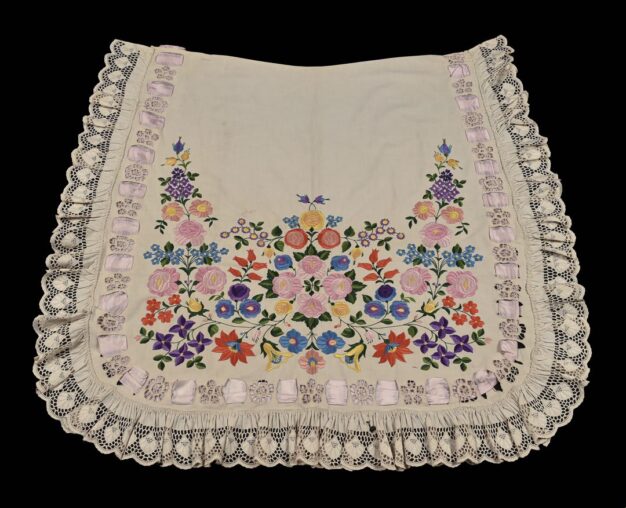From the Collection
Domestic embroidery has, to some extent, gone out of fashion. The days of stitching elaborate tablecloths, decorating cushions or curtains, and adding delicate motifs to household linens and daily wear, belong mostly to memory. Grandmothers’ legacies may linger in treasured pieces, and vintage revivals may give new life to decorated dresses and lingerie – but there is no longer any expectation that every household should proudly display hand stitched tableware.
Amongst the many domestic items that previous generations stitched and used with pride, the most obvious casualty of modern living is probably the apron. For centuries, the apron protected and decorated working wives, housekeepers, and servants, but modern living has reduced it to simple practicality, rarely worn except in specific circumstances. Now, probably, it is most familiar as either a uniform for painters, decorators and domestic staff – or the joke item donned for the summer barbecue.
Aprons used to be a universal female uniform … But aprons were also complex garments which appeared in many guises depending on a woman’s role on the day …For special occasions a woman would put on one of a variety of fancier aprons – an extreme style statement of a kind; such aprons were ruined if marked, just as the best tablecloths were, and many must have taken hours to make.
Rosemary McLeod: Thrift to Fantasy (Home Textile Crafts of the 1930s-1950s)
Pub: Harper Collins 2005
Item no EAMEG:3080 Apron (See image above)
‘Many hours’ is certainly true of the piece we feature here: an adult’s apron made and decorated somewhere around the end of the 19th and the start of the 20th century. We have several embroidered aprons in the collection, and this one clearly belongs to the ‘fancy’ category. It’s been made – the label suggests in Hungary – using white linen, and is embroidered with a naturalistic floral display worked in bright polychrome silk threads. Stylised floral cutwork motifs run around the edge, with a wide pink ribbon threaded through them. The edge is finished with a wide machine embroidered frill.
We acquired it as gift from the Needlework Development Scheme in 1962, and it is clear to see why it served as an exemplar for stitchers in the scheme. The embroidery is excellent, every stitch placed with care, and the back is as tidy as the front.
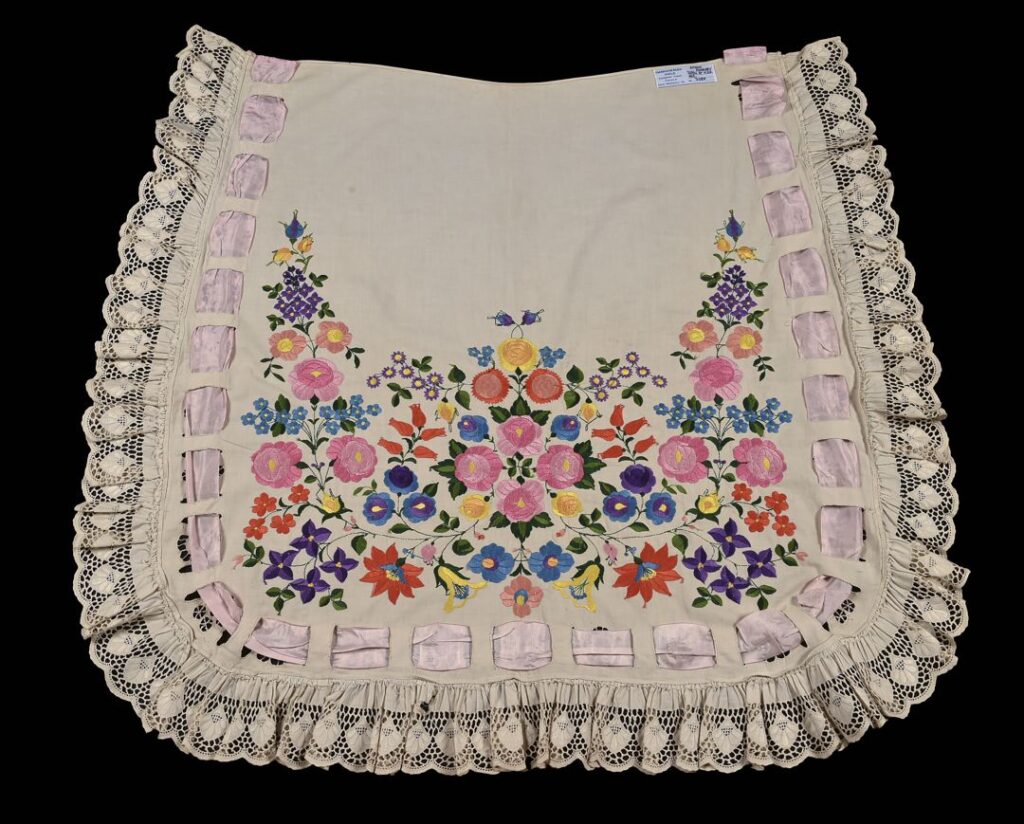
The cutwork is also very neatly executed. It’s possible this was made to be displayed, rather than worn, as there is no sign of staining or direct wear – although, if it were made for ‘best’ than the original owner obviously took good care of it!
Close up images of the Embroidered work
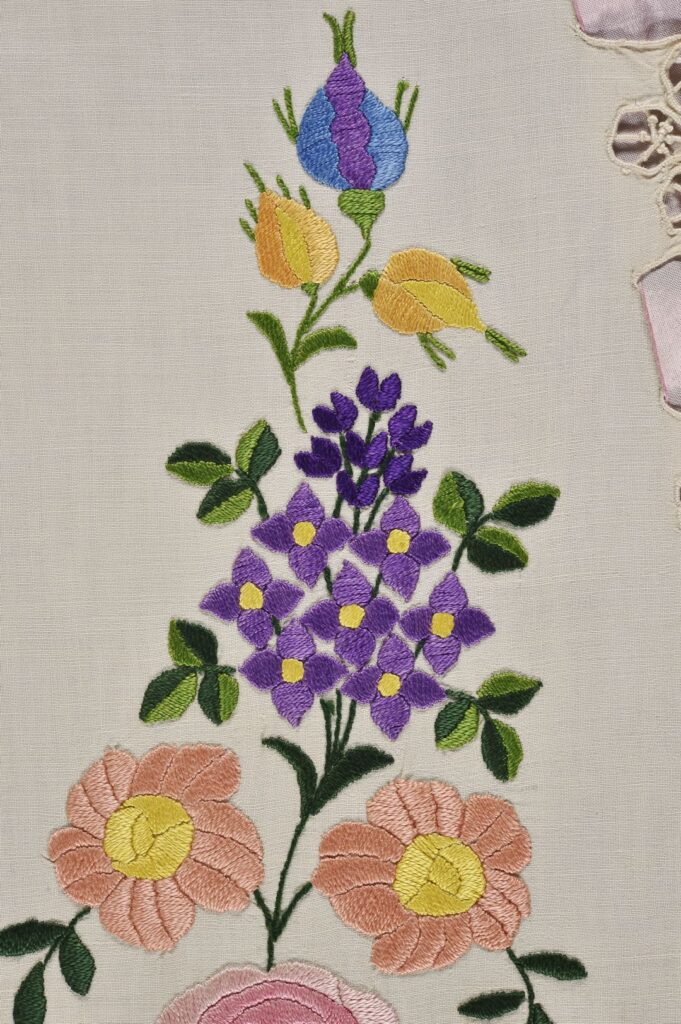
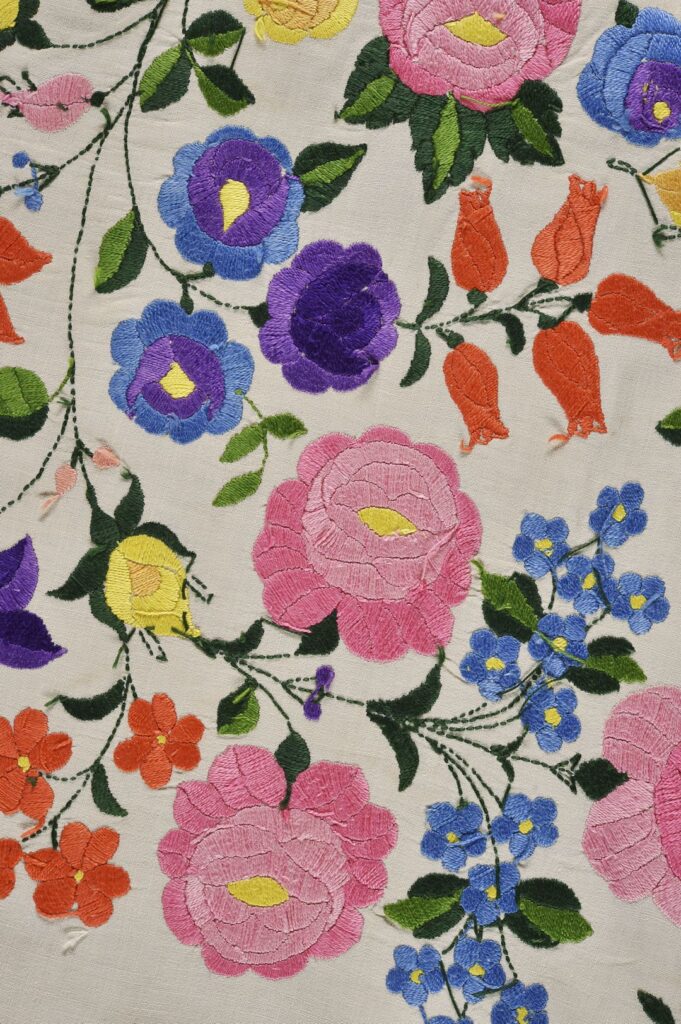
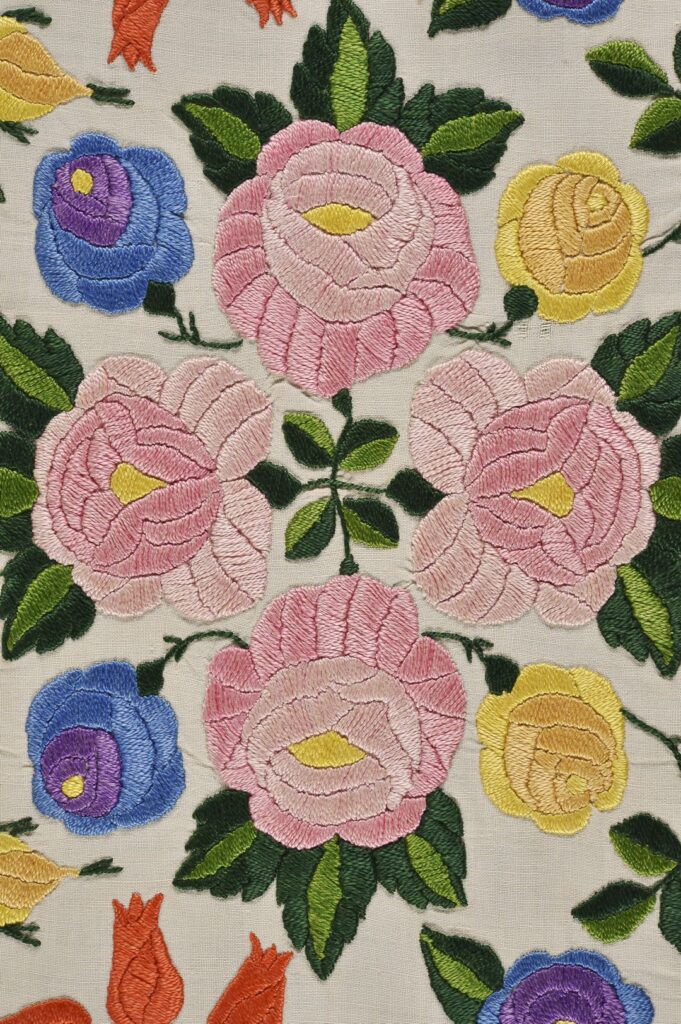
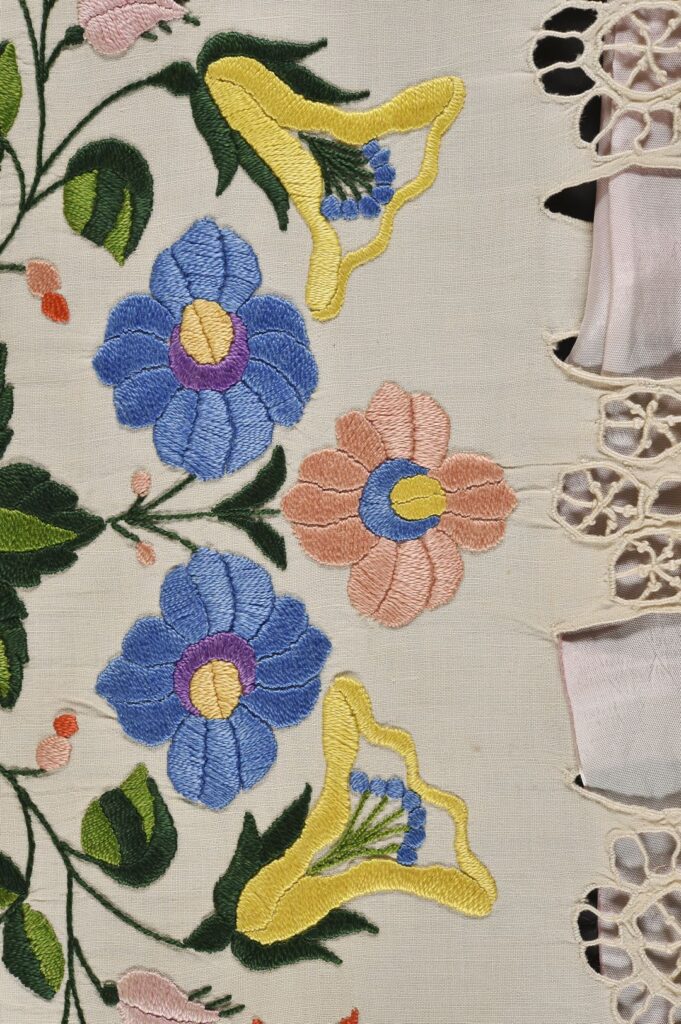
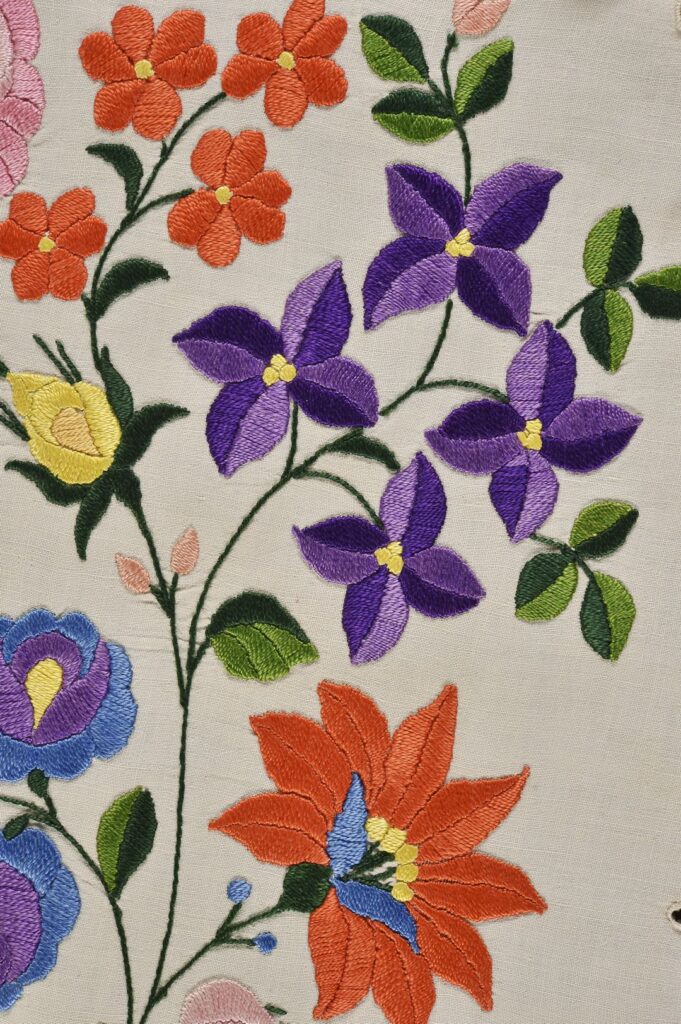
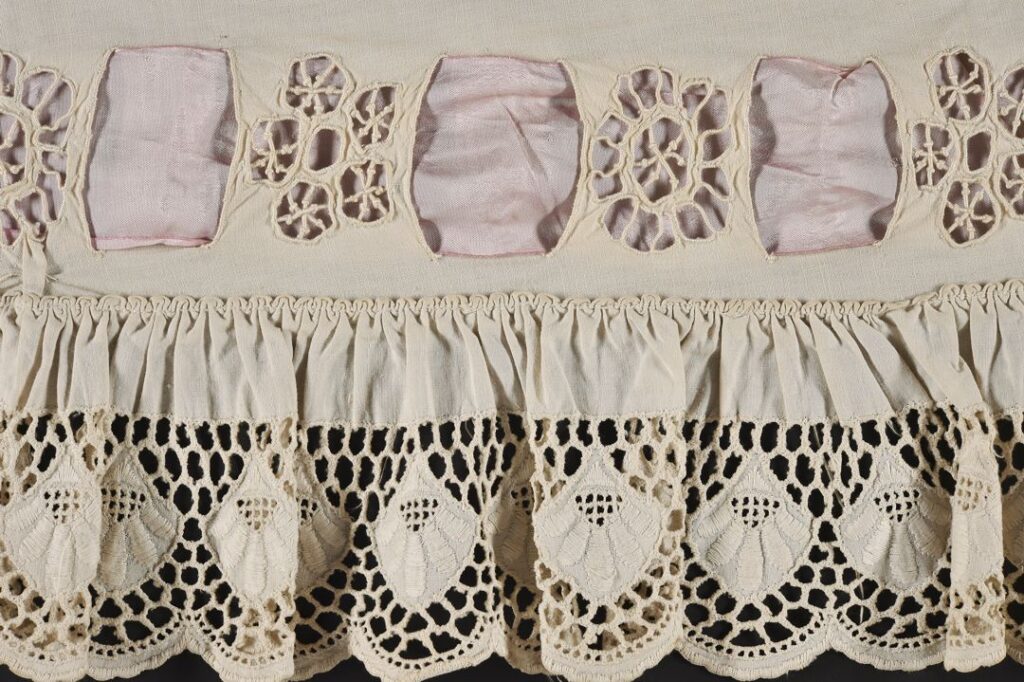
Find more items from our collection in our Art UK Gallery: Art UK | Discover Artworks
Collection photography by the Embroiderers’ Guild

